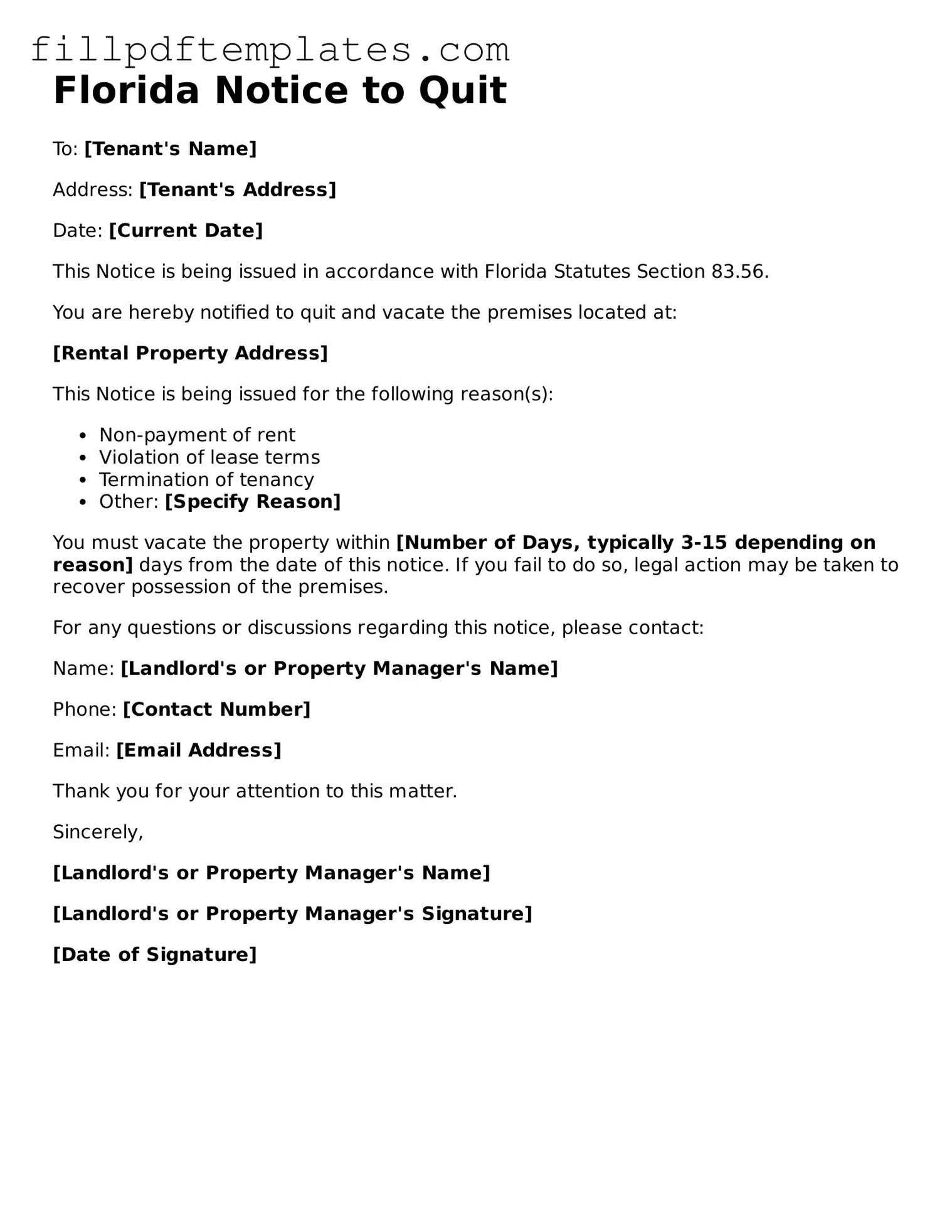Blank Florida Notice to Quit Form
The Florida Notice to Quit form is a legal document that a landlord uses to inform a tenant of their need to vacate a rental property. This form outlines the reasons for the eviction and provides a timeline for the tenant to respond. Understanding this form is crucial for both landlords and tenants to ensure a smooth transition and compliance with state laws.
Ready to fill out the form? Click the button below to get started!
Get Form
